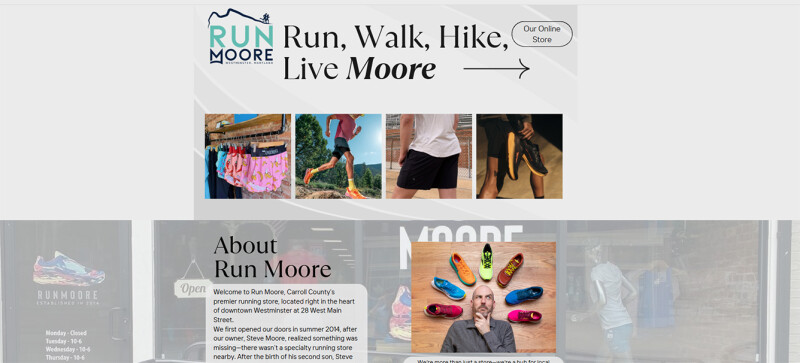These are not your father’s GPS watches. No, the technology has advanced a long way since back in 2003 when Garmin introduced the Forerunner 201 to much acclaim and curiosity. The world’s first GPS running watch, the Forerunner 201 addressed runners’ desires for objective data like distance, time and pace on their run.
Never mind the Forerunner 201 was a bulky, flip phone-sized personal computer for one’s wrist that suffered from satellite glitches and a comparatively high price tag of $160 (about the price of two pairs of the Nike Pegasus at the time). It was revolutionary and opened the floodgates to innovation in a nascent category.
Over the last two decades, GPS watches from the likes of Garmin, Coros, Suunto and others have become smaller, lighter, more reliable and robust, tracking not only mileage but also metrics like heart rate and sleep. They boast vibrant, high-resolution displays and expansive performance and lifestyle capabilities ranging from zone training to offline maps to music controls.
The evolution of GPS watches has created an attractive sales opportunity for run specialty shops, though one many have struggled to capitalize on given the category’s expense, the fast pace of innovation and the category’s slower inventory turn.
But make no mistake: GPS watches deliver a compelling sales opportunity, contends Dan Suher, head of Americas for Suunto.
“Take a look at the wrists of customers coming through your doors and you’ll see many are wearing a GPS-enabled device, so they’re buying these devices somewhere,” Suher says.
So, here’s the question: How can run shops earn more sales in this high-value category? To this, Suher, who spent four years at Coros before joining Suunto last year, has some battle-tested suggestions:
1. Listen and observe.
Many running retailers liken the sit-and-fit experience with footwear to an interview. It’s a chance to learn about customers and offer solutions to energize their fitness journey. While some customers might explicitly ask about tracking their mileage, others might drop subtle clues. Perhaps they travel a lot for work or are nervous about getting lost on trails, two situations in which they might appreciate learning about GPS watches and their capabilities.
So, too, can an associate gather clues from observation and following up with questions. For example, maybe a customer is wearing an older GPS watch. Ask them about their experience with the watch, what they like and what they wish it could do, like connecting to music or training guidance. More conversation generates rapport with the customer, but also creates a window to discuss relevant solutions.
“We can’t just wait for a person to come in and ask, ‘Do you guys sell GPS watches?’ and then jump out of our seat to make a $500 sale,” Suher says. “That mindset needs to be long, long gone.”
2. Create demo opportunities.
Given the high price points GPS watches carry, consumers are understandably hesitant to dive right into a purchase. Run shops can ease concerns and provide interested customers a literal test run with the product by having demo models handy.
Shops can have watches available at group runs for trial or even create a loaner program where individuals can rent a watch for, say, $25 a week and then receive a credit in that amount should they purchase a new watch.
“These devices are so complex that you can read a manual front to back or watch DC Rainmaker talk about something, but until you actually use it yourself, you’re just never going to get the full flavor,” Suher says.
3. Introduce and inform.
Suher touts the value of retailers hosting consumer-facing clinics sharing information and insights on GPS watches and optimizing their use. With all the features and capabilities today’s GPS watches offer, a 45-minute program from a local coach or vendor rep on leveraging a watch to enhance training and recovery can be incredibly valuable.
“These are the reasons why somebody shops with their local running shop instead of online or the big-box store,” Suher says.
4. Offer multiple solutions.
Suher acknowledges the constraints of a specialty retailer, especially when it comes to tying up thousands of dollars of inventory on slower-to-sell items. Still, he urges balance when it comes to stocking GPS watches and – as best and strategically as one can – stocking “a reasonable selection and reasonable diversity of product.”
“You don’t have to have every single watch from every single brand, but you should assess what your customers are gravitating towards? What are they looking for? How can you create different price points and different value?” Suher says. “If they can’t look at different brands and styles at their local store, then it’s more likely they’re going to purchase elsewhere.”
5. Take the long view.
Rarely will a GPS watch be an impulse buy. More likely, it’s something a consumer contemplates and researches over time. As such, multiple touchpoints with the consumer – an in-store clinic, a demo model and conversations with staff – help position a retailer to earn the sale.
“It’s so important to manage expectations,” Suher says. “You can’t do an event or a demo run and immediately determine its success by the number of watches you sold because it’s rarely going to be that direct. It’s likely one of multiple research points for the customer. And then, when they’re ready to make their purchase, they know, ‘Hey, this is where I’m going to get education and advice and support.’”
.jpg.small.400x400.jpg)






